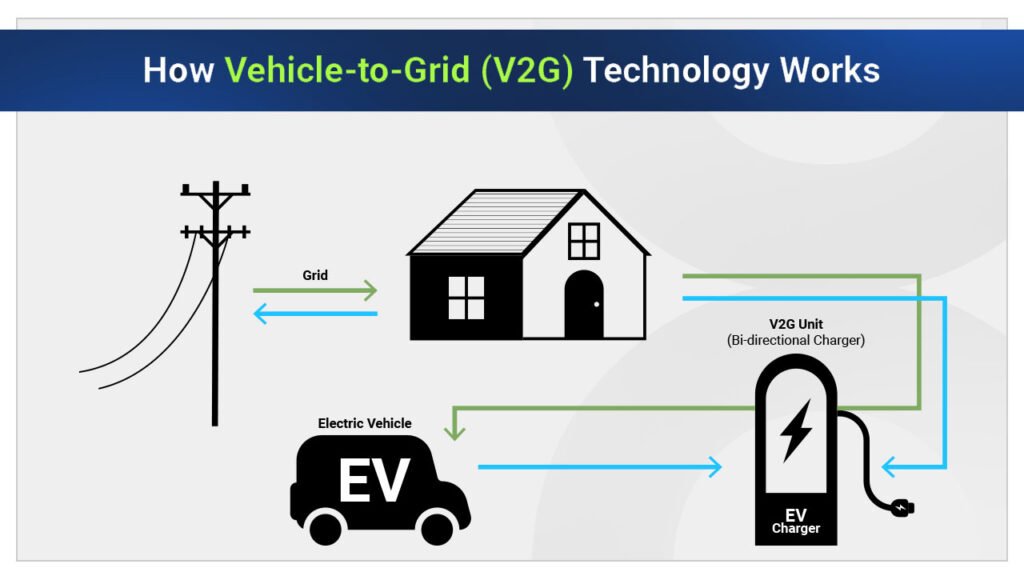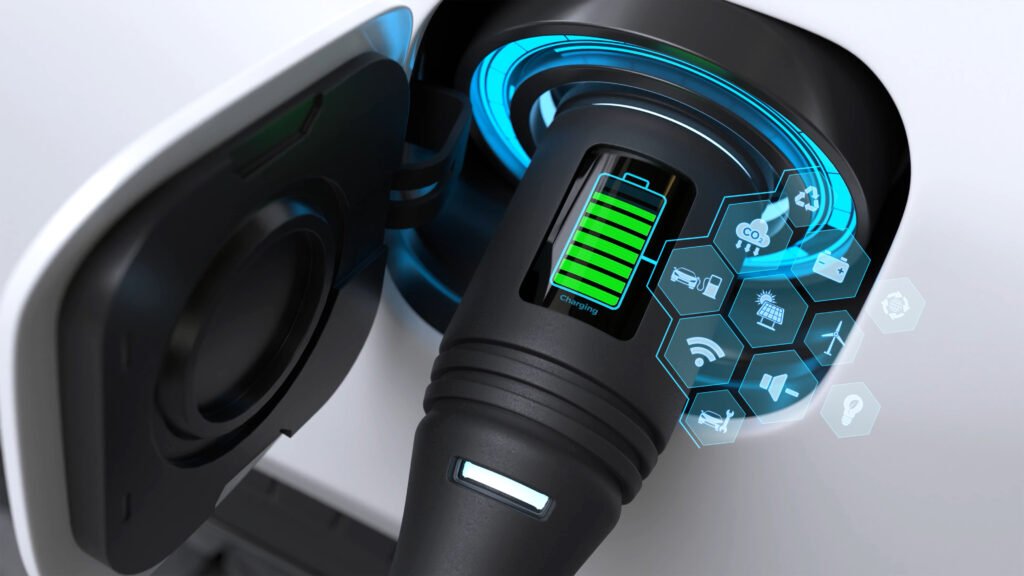What is V2G and Why Does It Matter?
Vehicle-to-Grid V2G technology allows your EV to send electricity back to the power grid — potentially stabilizing supply, lowering costs, and earning you money.
In 2025, it’s no longer a futuristic idea. But is it ready for mass use? Let’s break down the state of V2G technology — what’s working, what’s not, and what to expect next.

How V2G Works (Simplified)
- You plug your EV into a bi-directional charger
- Your EV’s battery sends power back to the grid during peak demand
- You’re compensated through:
- Utility bill credits
- Demand response programs
- Fixed per-kWh payouts
Requires:
- A V2G-compatible EV (Nissan Leaf, Ford F-150 Lightning, Kia EV9, etc.)
- A bi-directional charger (e.g., Wallbox Quasar, dcbel, Fermata Energy)
- A utility partnership or pilot program
Where It’s Working in 2025
- California: PG&E and SDG&E V2G pilots in residential neighborhoods
- Japan: NISSAN-led V2G integration since 2019, now nationwide
- UK: GridServe & Octopus Energy offering V2G for fleets and homes
- Quebec: Hydro-Québec pilot with EnelX and Nissan Canada
V2G Limitations in 2025
- Limited Vehicle Support: Only a few EVs offer V2G-ready architecture
- Expensive Hardware: Bi-directional chargers cost $3,000–$5,000
- Regulatory Barriers: Utilities slow to adapt
- Battery Cycle Concerns: Long-term degradation still under review

Emerging Solutions
- V2H (Vehicle-to-Home) as a gateway (e.g., Ford Lightning powering homes)
- V2B (Vehicle-to-Building) for businesses and apartment complexes
- Dynamic load management + AI to limit battery wear
FAQ
Q: Can I do V2G with my Tesla?
Not yet. Tesla does not currently support V2G — but hints suggest future support.
Q: Does V2G void my battery warranty?
Some manufacturers are offering V2G-specific warranties — read the fine print.
Q: Will I make money doing V2G?
In 2025, it’s more about energy savings and grid benefits, but some programs pay $10–$30/month.

Final Thoughts
V2G is real — but not universal (yet). It’s ready for pilots, early adopters, and fleets, but not quite “plug-and-play” for the average homeowner. Keep watching — this tech could power the grid and your paycheck by 2027.
Explore more:
- What Is Smart Grid EV Charging?
- Predictive Charging: Reducing Grid Stress
- How to Set Up EV Charging in Off-Grid Areas
Subscribe to VoltDriveHub for updates on V2G, V2H, and smart home integration.






